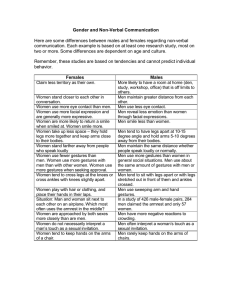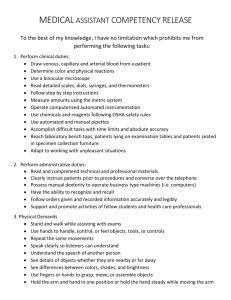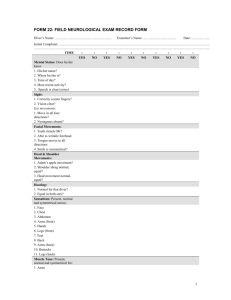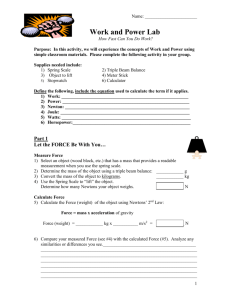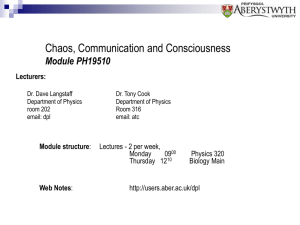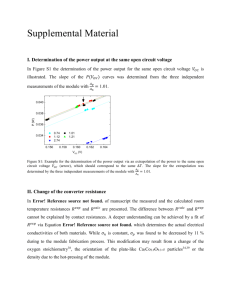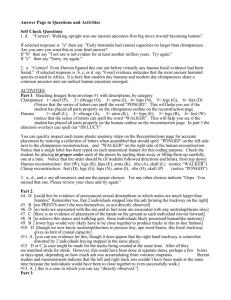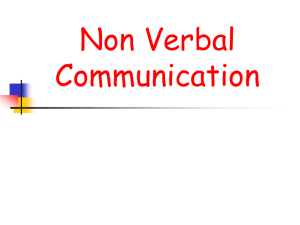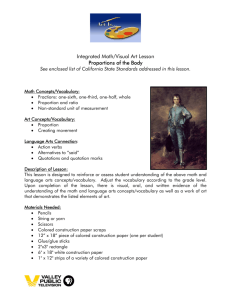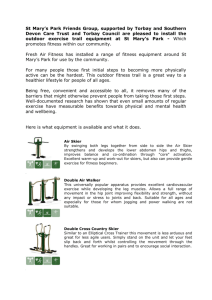Body language
advertisement
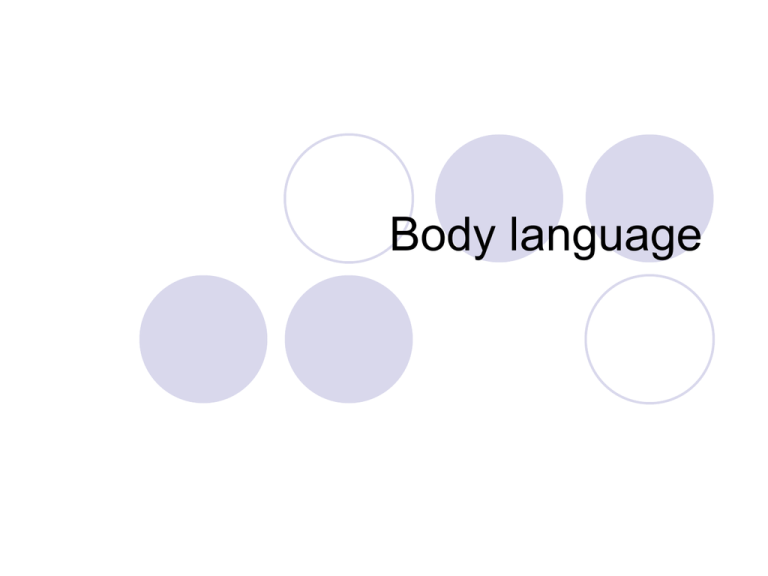
Body language True or false? 1. 2. 3. 4. 5. Body language is largely instinctive, thus difficult to change. While delivering a speech, you shouldn’t look at people individually; look at something that is behind them to „take all of them in” at the same time. Where the members of the audience are seated is of no importance as long as they can hear you. The closer you stand to your audience, the friendlier you seem. Body language signals may mean different things in different contexts. Aspects of non-verbal communication Body movement (kinesthetic behaviour) - signs based on agreement - gestures - organisers - emotives - accommodators Facial expression Paralanguage Occupying the space Objects Nature or nurture? Nature - fear,anger, surprise, disgust - smile - emotions – eyes! - mirror Nurture - personal space - touching - signals of yes/no - gender differences Eye contact Dilated pupils reflect emotional involvement Pupil movement reflects thinking processes Eye contact – control Audience should be facing Never - look at the ceiling - fix your stare at one enthusiastic face - wear dark glasses Facial expression Avoid a poker face Identify with your message: Reflect emotions related to the content Keep smiling (?) Gestures Free your arms and hands Gestures - extensions of thoughts Avoid compulsive movements - rubbing nose, turning a ring - moving praying hands in front of you - tapping with fingers on the desk - sweeping hair from your face - adjusting collar Body position Plant yourself firmly on the ground Avoid Crossed legs Bent legs with closed knees Swaying to and fro Putting your weight from one leg to another Stiffness (closed legs, closed arms/hands) Establish your space bubble - Move-occupy your space bubble - Sitting - Do not hide behind barriers (pulpit, desk, papers) - Avoid finding support on table, blackboard, tc. - Don’t stand too close Clothing Comfortable, familiar Match the formality of occasion Make a contrast to your background Avoid Rich patterns, excentric clothes Tight collars/belts/sleeves Jingling necklaces and noisy shoes Too warm clothes Openness Do not cross your arms and legs The act of opening Open hands – nothing is concealed (vs. clutched fists – nerves) Relaxed, prolonged eye contact Mirror Attentive listening Smile and nod slowly when listening (vs. Quick nod=impatience) Lean towards your partner Stand still Tilted head Deceptive and nervous body language A lack of eye contact Excessive hand movements Biting fingernails Chewing the inside of the mouth Drying mouth Control (stiffness, hands in pockets) Rubbing nose Dominant body language Making the body large and high Hands on hips Legs apart Chin up Erect position Standing on a pulpit Keeping a distance Breaking social rules - Imposing informal terms or talking down Invasion of personal space Interruption or never waiting for a response Dismissive gestures, facial expressions Eyes - Prolonged staring - Avoiding looking at partner Defensive-submissive body language Covering vulnerable physical areas (chin down, knees together, crossed legs, arms across chest or face) Using a barrier (pen, papers, table) Seeking escape (flicking the eyes side to side, leaning away) Keeping small Rigidity Control your body language Establish your personal space Practise speaking while walking Strive for an open position Keep your hands free to emphasise message Watch yourself – look out for compulsive acts Practise eye movement Learn to listen

